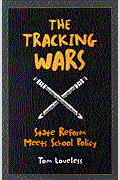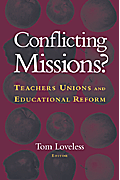Students nationwide will be heading back to school in the coming weeks—maybe it’s already begun where you are. For school principals, back-to-school season is always a frenzy of preparation activities—and for most principals, teacher hiring is usually the biggest and most critical task in the weeks leading up to the new year. Any principals who have been paying attention to the current conversations about teachers will have their eyes peeled for applicants from minority teacher candidates. The reason for their vigilance is that public schools are suffering a shortage in teachers of color: though minority students make up roughly 50 percent of all public school students, minority teachers comprise just 18 percent of the teacher workforce. And many organizations, from unions to districts to the U.S. Department of Education have weighed in on the importance of having a more diverse teacher workforce.
But to what extent will the frenzied teacher hiring efforts of districts help to narrow the teacher-student diversity gap? In a Brown Center report released today, we—along with co-authors Hannah Putman and Kate Walsh from the National Council on Teacher Quality—examine this issue and further explore what it would take to achieve a national teacher workforce that is as diverse as the student body it serves. Based on our analysis, attempts to close the diversity gap through hiring alone will barely nudge the diversity gap today and into the decades to come; truly addressing the yawning gaps will require a much broader long-term strategy.
U.S. teacher diversity trends
Both the percentage of minority students and teachers in schools have increased over the years, though the student share has increased at a much higher rate than the teacher share, creating a meaningful diversity gap. And based on our calculations, the diversity gaps will likely persist for decades into the future and may even grow. Based on current inflows and outflows from the teacher workforce, we find that the diversity gap between black teachers and black students (which stands now at nine percentage points) will remain essentially the same, at least through the year 2060, while the gap between Hispanic teachers and Hispanic students (currently 18 percentage points) will most likely increase by four points.
Figure 1. Diversity of the student and teacher populations over time
 Source: United States Census Bureau, 2014 National Population projections and estimates based on authors calculations.
Source: United States Census Bureau, 2014 National Population projections and estimates based on authors calculations.
Examining hiring strategies
Looking at data on teacher hiring we find that black and Hispanic teacher candidates are hired for teaching jobs at significantly lower rates than white teacher candidates. For instance, four years after graduating, while 19.3 percent of white college graduates are or have worked as teachers, only 16.8 percent of black college graduates and 17.6 percent of Hispanic college graduates can say the same.[1] There may be multiple reasons for this gap, ranging from differences in actual interest in becoming a teacher to differences in licensure passage rates. Regardless of the source, though, this data reveals a leak in the teacher pipeline in which districts have an opportunity to intervene.
Well, what would happen to the diversity gap if these hiring discrepancies were closed by districts? Almost nothing, it turns out. You can see this in Figure 2. The panels depict the proportion of black or Hispanic teachers under different hiring scenarios; the thick black “Proportion representing parity” line is the share of minority students and the diversity gap is closed (parity is achieved) when the multi-colored teacher lines intersect with this black line.
Figure 2. Effect of increasing hiring of black and Hispanic teachers on diversity gap

Source: Estimates based on authors calculations.
Even projecting out to the year 2060, equating hiring rates of minority teacher candidates to those of white candidates reduces the black and Hispanic diversity gaps each by less than one percentage point (keeping all else equal). An even more proactive hiring strategy where minority candidates are hired at modestly higher rates than white candidates would make almost no discernible difference.
These findings show that increasing hiring rates among minority teachers makes just a small contribution to closing the diversity gap. In fact, we looked at three other points in the teacher pipeline where minorities could be lost—college enrollment and completion, taking interest in pursuing a teaching career, and being retained in the classroom—and we found that racial equality on any of these other strategies would lead to greater reductions in the future diversity gap than what is achieved through a focus on hiring alone. This is not to say that hiring more minorities doesn’t help—it does. However, the gaps between white and minority teacher candidate hiring, conditional on being eligible for hire as a teacher, are pretty small. Rather, what is most urgently needed for a more diverse workforce is to get more minorities through college and persuading them to become teachers so they can get to the point of being eligible for hire.
In sum, achieving a teacher workforce that is as diverse as the student body it serves will require exceptionally ambitious patches to fix the leaky pipeline into and out of the teaching profession, and must include a broader set of actors than just school principals and districts’ HR offices.
[1] U.S. Department of Education, National Center for Education Statistics, 2008/12 Baccalaureate and Beyond Longitudinal Study (B&B:08/12). Table created by the authors using the NCES QuickStats tool.








Commentary
We cannot simply hire our way to a more diverse teacher workforce
August 18, 2016